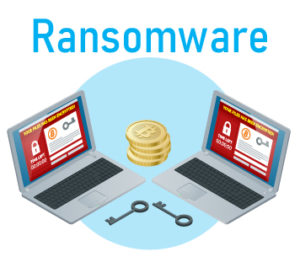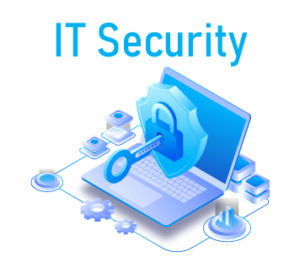What is Technology as a Service?
Technology as a service provides a huge opportunity for suppliers and customers who rely on their services. TaaS enables customers to access technology on demand. Instead of buying large technological assets that will outgrow (and reserve capital expenditures), the organization purchases access to technological resources that meet current needs. If needs change, access may be reduced or reduced with demand.
We know that companies can struggle to find the time and effort they need to deploy, manage and maintain their IT infrastructure and ecosystems of devices and software across their entire organization. With older devices that can’t handle the workload of users and new, resource-intensive software, the cost of support and speed of service are also affected.
How best to think about TaaS? It’s a bit like renting a car, with gasoline, oil, servicing, etc., and an upgraded model every couple of years! It’s one simple, flexible subscription for all your technology needs – combine all of this and save up to 30% on the total cost of ownership of your hardware and software solutions.
With Technology -as-a-Service (TaaS) you can buy hardware, software and a range of services – use, training, support and device management – under one agreement. With the latest high-end hardware available to you and your staff, as well as the most efficient software solutions, support costs – both time and money – are reduced.
In addition to freeing up time and resources to focus on other areas of the business, TaaS users know exactly how much they spend each quarter and can plan their budget accordingly. TaaS reduces financial barriers to entry into new installations and allows for frequent refreshment of the device, providing flexibility and scalability that traditional purchasing does not. Instead of spending time managing software installations, updating old software versions, and monitoring updates, employees are free to focus on other core business activities.

TaaS Business Benefits
More and more businesses are leveraging the advancement of technology that TaaS enables. Enhancements such as near-ubiquitous broadband, easy-to-pay solutions, low-cost storage, micro-services, containerization, and growing acceptance by consumers and C-level leaders in subscription services. All together, these developments create ecosystem technology where software, platforms and services are moved from office cabinets and into fully owned server centers and the cloud.
In addition to purchasing technology as a service, if your organization has a technology product, you should also consider moving technology to the cloud as a service. Customer behavior is changing. Customers buy smaller physical assets and non-shelf software products. Today, more than ever, they want technology services that allow them to reduce use at a low cost of entry.
And as customer behavior changes, the real benefits of switching to TaaS for technology vendors include the ability to add features and automatically update users to the latest version, collect current revenues (making business more predictable), reduce the number of supported products, and increase flexibility and scalability.
The future of TaaS
The great dominance of different services and faster software innovations are the two major trends that will shape all technology companies in the next decade. To continue their success in the business, hardware-based companies need software and service transformations and innovations. Such transformation requires new approaches in the way technology is developed, delivered, commercialized and used. This approach, which we call technology as a service (TaaS), is the future for emerging technology sectors. This model has already been introduced in the computer industry. Today’s most successful companies in this industry are no longer HP or Microsoft, but are companies like Salesforce, Amazon and Google. Salesforce is known for the success of Software as a Service (SaaS). Amazon has expanded into an Infrastructure Service (IaaS). Google has always made its technology available as a service and has come out with multiple enterprise services (TaaS).
We can say the future of TaaS lies in the proprietary technology that software enables and offers as “services.” Unlike the traditional generation of work-based services, TaaS services are highly software-enabled, on-demand, customizable to business contexts, and are often virtually delivered by a system of hardware, software, and people. Unlike the traditional product model, TaaS uses technological tools to provide dynamic features and solve business problems in close collaboration with customers. The TaaS-based business model uses software to increase functional versatility, and it uses ecosystems to expand the scale of value created for the customer.
Below we list several important characteristics that TAAS differ from traditional technology products and traditional services:
- Exclusivity
Traditionally, getting services but not owning property often indicates sharing and breach of privacy. For example, some companies’ printing services are shared and not private. TaaS, however, gives customers exclusivity without ownership. Exclusive service is a service provided in a private and secure environment where the customer has full control over the features without interfering with other customers.
- Software Defined Functions
Traditional hardware-based features are fixed once from the factory. From a customer perspective, software-defined technology functions are extensible and programmable, more precisely they have the flexibility to serve multiple purposes and create cross-functionality processes.
- Maintaining ownership
Services are provided without the complete transfer of ownership of the property in question.
- Customizability
Specific Services are unique to customer needs and can be customized accordingly.
- On request
On request means that a resource or function can be activated and / or reduced whenever the business situation requires it.
- Transaction model based on consumption
This means that services are only charged when used.
- Virtual Delivery
TaaS services are often provided by a system consisting of machines or devices, data, applications, people and processes. Such facilities should be relieved of location restrictions whenever possible.
- In the context
Unlike traditional technology products, which have fully framed forms that emerge from the factory, TaaS should provide features that fit and shape the business context.
- Modular
Modular means a component or function is standalone with standardized interfaces, so they can be used to build different systems or run different processes.
In the next decade, TaaS will become the dominant model for technology commercialization. Take the example of Apple, which has transformed its business and immediately the industry by turning devices such as iPhones and iPads into personalized service centers, backed by technology systems and business ecosystems. New technologies like solar and 3D printing are choosing TaaS models for sale. Established technology companies such as GE and Siemens are turning monitoring and diagnostics technology into services.
Conclusion
TaaS requires a strategic transition that must be carefully planned and executed. This is because TaaS would require a set of technical, commercial and operational capabilities, many of which may be new to product-based technology companies. A three-step approach, starting with “asset-based services”, moving to “feature-based services” and then “business-defined services” allows the company to gradually build capabilities according to the successful TaaS model. The companies leading this transition will create future prosperity for industry sectors and businesses.






